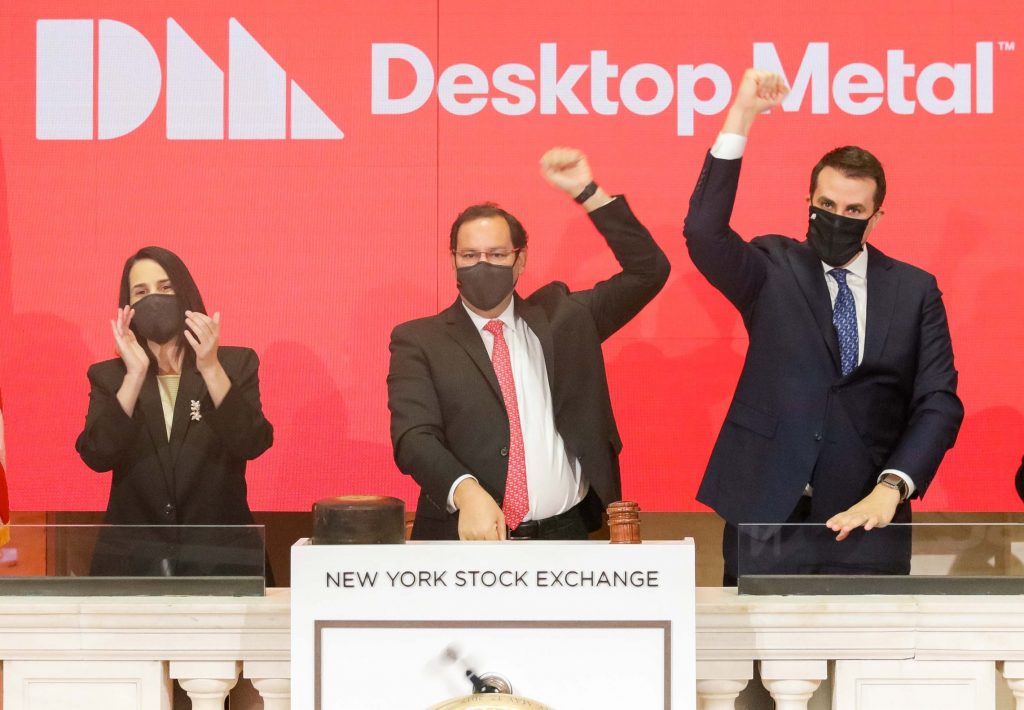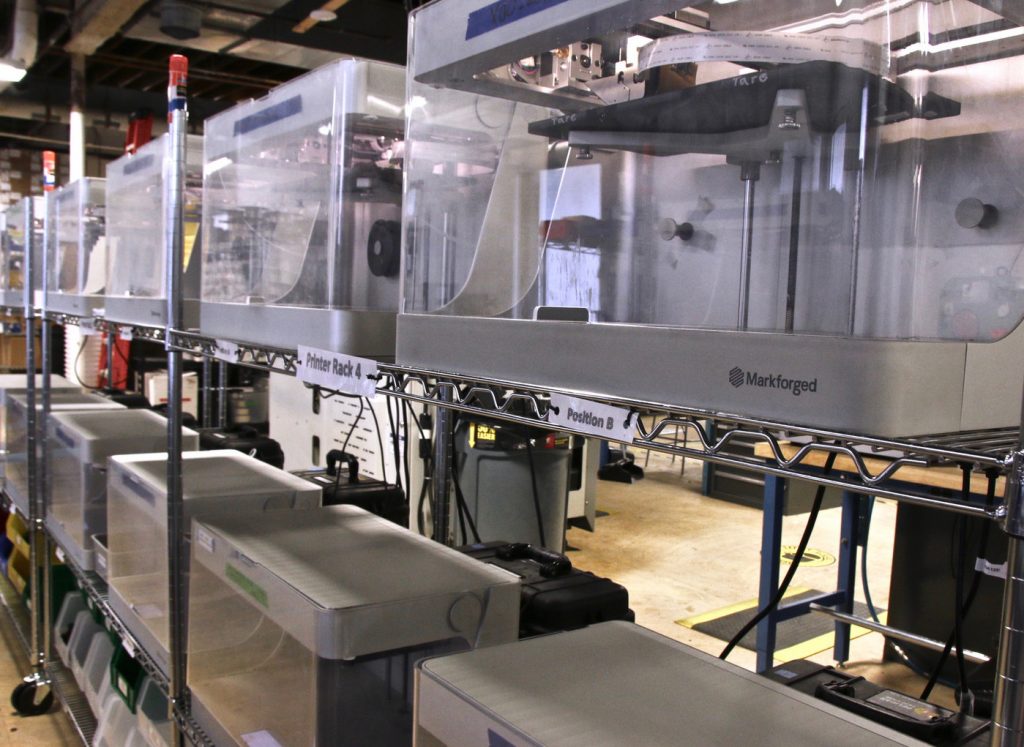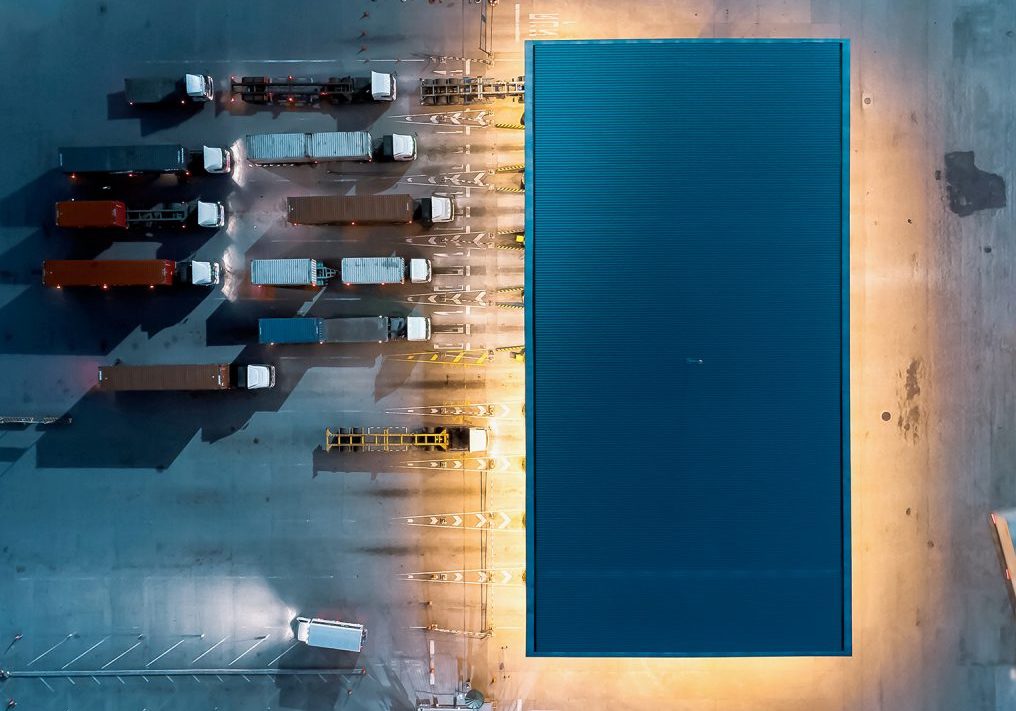Over the last year, the number of firms going public via mergers with Special Purpose Acquisition Companies (SPACs) rather than conventional IPOs, has risen exponentially.
A record 248 SPAC IPOs took place in the U.S. alone during 2020 (2019: 59). Figures for this year have already beaten that record, with 296 SPACs in the first quarter of 2021. Investment in 3D printing companies accounted for nearly $11 billion worth of these transactions.
“With the pandemic, the importance of technology has become apparent to everyone,” explains John Howe, a Finance Professor at the University of Missouri. “SPACs are targeting technology companies because they are sexy, in the news, and hold out the possibility of very high returns.”
“SPACs have also provided public investors with the opportunity to generate returns in potentially disruptive technology companies, that were previously available to VC investors,” adds Jim Ricchiuti, a Senior Analyst at Needham and Co. “SPACs are targeting 3D printing companies because they offer the potential for strong future growth.”
For such 3D printing firms, merging with an already-listed SPAC provides them with a faster means of going public, than traditionally highly-regulated IPOs allow. SPAC mergers are usually followed by a Private Investment in Public Equity, or ‘PIPE,’ where investors can buy shares in the new business at below market value, rapidly raising capital.
Using these PIPE and SPAC mechanisms, 3D printing firms have effectively been able to turn market interest into huge funding opportunities in recent months. Desktop Metal, early to the SPAC IPO trend in December 2020, raised $575 million via a reverse merger, while Rocket Lab, VELO3D, Markforged and Redwire, are set to gain investment worth over $1.8 billion via similar deals later in 2021.
To find out why additive manufacturing firms, in particular, are becoming a target for SPACs, 3D Printing Industry has spoken to financial experts from NewCap Partners, Craig Halllum, William Blair, Needham and Co, EDHEC Business School, the University of Missouri and AM Ventures, who have provided their insights on the potential source of 3D printing’s current investment boom.
| Company | Projected Post-SPAC Value | Expected Funding Raised | Completion Date |
| Rocket Lab | $4.1 billion | $750 million | Q2 2021 |
| Desktop Metal | $2.5 billion (Completed) | $575 million (Raised) | Q4 2020 |
| Markforged | $2.1 billion | $425 million | ‘Summer 2021′ |
| VELO3D | $1.6 billion | $500 million | H2 2021 |
| Redwire | $615 million | $170 million | Q2 2021 |
| Total | $10.9 billion | $2.4 billion |
3D printing a “breeding ground” for growth
Set up by EOS founder Hans Langer in 2017, AM Ventures is a VC firm that’s dedicated to identifying, and investing in, 3D printing’s most promising start-ups. Given that the company recently launched a new €100 million fund to support those developing new technologies, its Managing Partner Arno Held is ideally-placed to explain why SPACs are suddenly so confident of a return from 3D printing investments.
Since Q4 2020, Held says that he’s seen a “very steep increase” in industrial 3D printing investments across the industry, which he attributes to the technology’s growing cost-competitiveness, as well as technological advances. In particular, Held highlights the potential of AM within digitization, where it’s capable of being “an interface technology” that brings “digitally designed products into the real world.”
“Both AI and 3D printing are great breeding grounds for fast growing start-ups and a big challenge for bigger, more rigid companies who are still struggling to find the right approach to deal with these new technologies,” he added. “This opens the potential for market consolidation and hence, big investments in these fields.”
“3D Printing is the one big technology that turns virtual ideas and drafts into real physical products.”
While Held acknowledges that the industry is currently in the midst of a “big hype phase,” leading to some inflated SPAC IPO valuations, he also believes that 3D printing retains significant potential for further growth. “The valuations are currently bigger than anything that we have ever seen in our industry,” said Held.
“I assume that this trend will last for another year or two with a slight cool down at the end of this period,” he added. “However, I am fully-convinced that AM will then have established itself as one of the big disciplines of advanced manufacturing, and will remain a very exciting and successful investment category, with much higher growth potential than other manufacturing technologies for the coming decades.”
Desktop Metal’s snowball effect
Brian Drab, an analyst with fifteen years’ experience covering the financials of industrial technology companies for consultancy firm William Blair, believes that interest in 3D printing is being driven by Desktop Metal’s decision to go public last year. For Drab, the move proved that substantial funding could be generated via SPAC IPOs, and increased the awareness of binder jetting technologies among mainstream investors.
“I believe Desktop Metal’s SPAC transaction and subsequent public status raised the profile of the industry,” said Drab. “Desktop Metal has stated that the company’s technology will finally make 3D printing feasible for large-scale manufacturing, which caught the attention of many. It also triggered other private companies to explore raising capital and going public.”
However, while Drab sees “a lot of promise” in the new 3D printing technologies currently being developed, he doesn’t believe that SPACs are specifically seeking out related firms for acquisition. In fact, according to Drab, SPACs tend to target companies working in familiar industries, and hold the potential to achieve revenue growth in the longer term.
“I don’t know that SPACs are specifically targeting 3D printing companies more than those in other industries,” added Drab. “SPAC managers tend to look for companies that align with their experience, which should enable them to add some value to the company and transaction, but more than anything, I believe they are simply looking for companies that have solid long-term growth prospects.”

SPACs a “win-win situation”
Dayton Horvath, a Principal at investment firm NewCap Partners, says that 3D printing has several “promising growth-stage companies,” making the recent SPAC IPOs a “win-win situation.” Despite this, Horvath and his NewCap colleagues advise caution when following investment trends, given that interest in the technologies has spiked and fallen before during the mid-2010s.
“Public markets are finicky and value short-term results, which make them hard to predict for long-term growth industries like 3D printing,” explained Horvath. “3D printing is an amazing technology with a very bright future, although the adoption curve is slower than SaaS and enterprise software companies, given the engineering rigors not only on the 3D printing process, but the qualification process on high-value parts.”
“We’ve seen 3D printing stocks garner high demand such as in 2014, only to fall out of favor as the adoption curve plays out.”
Interestingly, Horvath also views multi-material printing and digital part twin technologies as promising areas that could help businesses to diversify their supply chains in future. Given the recent disruption caused by the pandemic, the issue has become a priority for many manufacturers, and this could create an opportunity for 3D printing firms to gain a larger slice of what is ultimately a $12 trillion global industry.
“Investors are always on the look-out for orders of magnitude improvements in performance, speed, or cost,” added Horvath. “COVID has taught us that we need to have agile supply chains, and only through 3D printing and related software can we rapidly shift finished part production or create tooling necessary, to make our supply chains nimble enough to respond to market needs.”
Boom based on “profitability”
Since joining asset management firm Needham & Company from Lehman Brothers in 1999, Jim Ricchiuti has risen to a Senior Analyst position, where he focuses on tech, imaging and electronics companies. From his informed perspective, Ricchiuti believes that SPACs are booming because they provide 3D printing firms with a more secure means of achieving market flotation, than conventional IPOs allow.
“SPACs have emerged as an IPO alternative for late-stage private companies, because they offer more certainty and control in the process of becoming public,” said Ricchiuti. “But in some respects, SPACs are targeting 3D printing companies in the same way that they are targeting EVs, battery technologies, automation to sports betting.”
Although Ricchiuti says that there’s “less understanding” among investors of the potential of 3D printed electronics, he also sees the industry’s recent SPAC boom as a reflection of the technology’s progress into end-use applications. In fact, according to Ricchiuti, there’s now an increased focus from investors on companies that are “best-positioned to benefit from the transition to industrial-grade end-use parts.”
“There is a growing realization that polymer and metal additive manufacturing technology is advancing beyond the legacy prototyping applications that supported the industry’s growth for the past 25 years,” added Ricchiuti. “New industrial-grade machines are addressing what investors believe will be the increased adoption of these technologies across most, if not all, manufacturing industries.”

3D printing an “enabling technology”
3D Printing Industry also spoke to Greg Palm, a Senior Research Analyst at investment banking firm Craig Hallum, who often covers the financials of the industry’s highest-profile companies. Like a growing number of financial analysts, Palm sees a bright future ahead for the stock of many 3D printing firms, given the design and cost benefits they’re beginning to provide to large volume manufacturers.
“AM is really an enabling technology, that can lead to faster part procurement and lower costs (based on the specific application), and even entirely new geometries,” said Palm. “This is why some of the newer technologies are worth watching, and will help the industry’s progression from prototyping and low volume to mass production.”
Investor interest, according to Palm, has effectively “propped up” many 3D printing firms during what has been a difficult post-pandemic financial period, and he views SPACs as a form of “taking advantage of this environment.” That being said, Palm believes that SPACs will continue to target AM companies moving forwards, due to their technologies’ potential as an enabler of localized manufacturing.
“Over recent months, investor interest has accelerated for high-growth, disruptive technologies, and some SPACs have specifically targeted 3D printing companies,” explained Palm. “Additionally, there seems to be an added excitement around the newer technologies and potential opportunity around supply chain reshoring, which could directly benefit additive manufacturing firms.”
Academics issue cautious SPAC outlook
Lastly, Milos Vulanovic and John Howe, Finance Professors from the EDHEC Business School and University of Missouri, have weighed-in on the subject from a more academic standpoint. According to Howe, tech start-ups have “spawned millionaires” leaving investors keen to spot the next unicorn, but the poor performance of SPAC shares could ultimately lead many to lose interest in the long-term.
“I think that many SPAC acquisitions will be less than successful (for example, because the SPAC paid too much for the target company),” said Howe. “In turn, poor performance will discourage investors. Further, people who were locked down, started trading as a type of hobby or distraction. With countries opening up, there will be less of this.”
By contrast, Vulanovic believes that a combination of record low interest rates, and 3D printing’s potential “to impact on our way of life,” will lead the very best SPACs to grow in value, thus like firms in other industries, their success will vary company-to-company.
“This may depend on many factors, but if the 3D printing industry brands itself with quality products, we can expect increased valuations for the best companies in the industry,” said Vulanovic. “I wouldn’t be surprised to see a number of failures as well, similar to those witnessed in the solar energy industry a decade ago.”

3D printing SPACs, here to stay?
Like Howe, analysts at the Harvard Business Review recently concluded that the ‘SPAC bubble’ is primed to burst, and some industry figures have even cast doubt on their longevity. Yoav Stern, for instance, CEO of the cash-loaded acquisition-hungry Nano Dimension, has criticized what he describes as a “SPAC tsunami,” for causing firms to be in “la-la-land” when it comes to their valuations.
However, assessing the success and longevity of 3D printing’s SPAC IPOs is currently very difficult, as of all the recently-announced reverse mergers, only Desktop Metal has sealed the deal and gone public thus far. While shares in the company hit heights of $33.50 in February, they’ve since fallen back to the $14 mark, potentially indicating that investor interest is beginning to wane.
As highlighted by Vulanovic, maintaining investor interest in 3D printing will be vital to the continued viability of SPAC IPOs, and this trend should become clearer as other deals are finalized later in 2021. Interestingly though, Desktop Metal’s IPO did cause shares in its competitors voxeljet and ExOne to soar this year, raising the prospect that Markforged and VELO3D’s deals could have a similar impact in future.
Either way, whether 3D printing SPAC IPOs are long-lived or not, analysts agree that they currently provide firms with an excellent means of raising capital, and fuelling their further growth. What’s more, the faith being shown by investors in the technology, reflects its recent progression from early-prototyping applications into larger scale end-use production.
To stay up to date with the latest 3D printing news, don’t forget to subscribe to the 3D Printing Industry newsletter or follow us on Twitter or liking our page on Facebook.
Are you looking for a job in the additive manufacturing industry? Visit 3D Printing Jobs for a selection of roles in the industry.
Featured image shows a pile of dollar bills. Image via Sharon McCutcheon, Unsplash.



